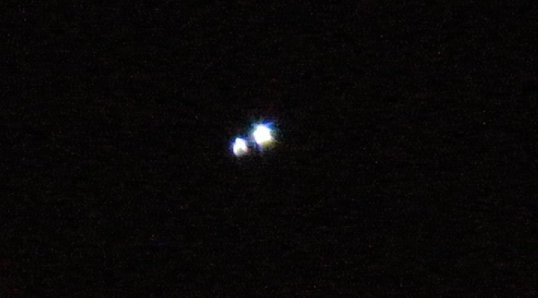
 |
Mizar has the distinction of being the first-known double, the pairing discovered by G. B. Riccioli in 1650. The two white stars, 14 seconds of arc apart, are striking as seen through a small telescope. The apparent irregularity of the images is caused by turbulence in the Earth's refracting atmosphere (twinkling). The two nicely illustrate the dramatic decrease in luminosity that accompanies a small change in dwarf spectral class, from A2 (Mizar A, the brighter) to A5 or A7 (Mizar B), the result of a small decrease in mass. The two orbit with a period of at least 5000 years. Each is again is a close double, the components too close to separate here. Image courtesy of John Thomas. |